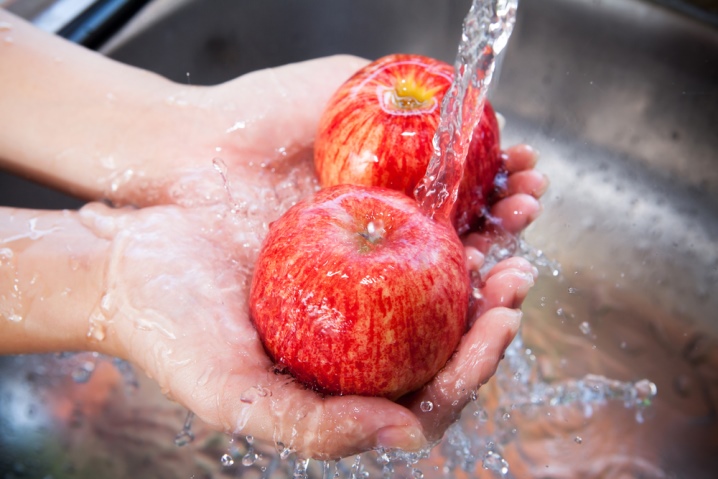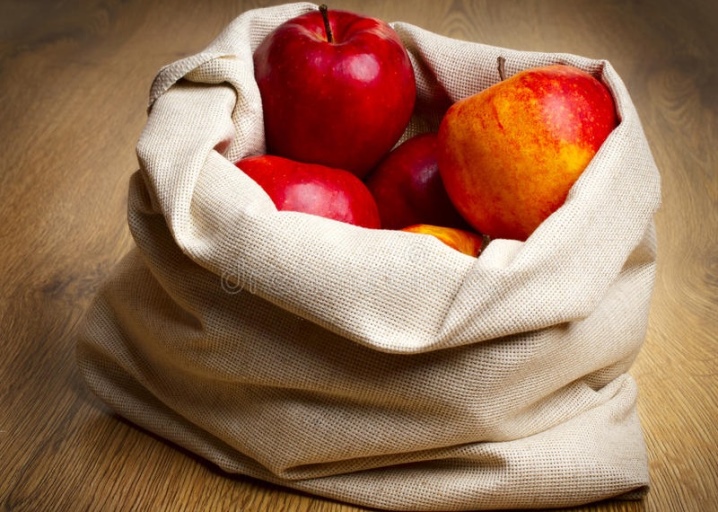How to store apples in the cellar for the winter?

An apple is one of the most common and delicious fruits that you can grow in your area. To enjoy your harvest not only in summer and autumn, but also in winter, the gardener needs to learn how to properly store the fruits.

Primary requirements
The ideal storage location for apples must meet certain requirements.
- Temperature. The ideal temperature for storing apples is 1-2 ° C. At the same time, the air humidity in the room should be high. In this case, the fruit will not dry out or shrivel over time. When stored in a dry basement, the fruit should be wrapped in oiled paper.
- The size of the room. It is very important that the walls in the cellar are not lower than 2 m. Due to this, condensation will not collect on the ceiling. The floor in the room should not be concreted, but wooden or lined with bricks.
- Ventilation. It can be both natural and artificial. The main thing is that the air in the room circulates freely. In this case, mold will not appear in the basement of the house.

To protect the room from fungus, as well as to make the cellar a safer place to store fruits and vegetables, its walls must be whitewashed in advance. This is usually done in the summer. The walls are treated with a solution of lime and copper sulfate. Further, the room is well ventilated.
After whitewashing, the room also needs additional cleaning. The cellar needs to be swept well. All rubbish, rotten boards and boxes must be removed and destroyed.
In a clean and dry environment, the harvested crop lasts much longer.

Preparation
In order for winter apples to be well preserved until spring, they must be properly prepared.
Selection of apples
The first step is to select good apples for storage. They must not be dented or damaged in any way. It is best to choose fruit with stalks. It is desirable that the apples have a natural wax bloom. You do not need to send for storage fruits that have fallen from a tree. They deteriorate very quickly.

Sorting
All harvested fruits must be divided into varieties, as well as sorted by size. First of all, it is recommended to separate large apples from small and medium ones. This way they will last longer and better. After all, small apples lying next to large ones ripen much faster. This, in turn, leads to spoilage of large fruits. Therefore, apples of different sizes are recommended to be put in different boxes.
Fruits of different varieties are also stored separately. Only late-ripening varieties of apples are worth laying in the basement for the winter.
They can stay in the cellar for six months. During this time, the fruits do not lose their taste. These apples are harvested before they are ripe.

Fruit processing
To increase the shelf life of the fruit, some gardeners process them with various means.
- Potassium permanganate. A weak solution is used for processing. The fruit is soaked in it for only 2-3 minutes. After that, the products are wiped with a dry towel or napkin and put away for storage.
- Glycerol. To process apples, a rag is moistened with a small amount of glycerin. After that, the fruits are gently rubbed with it. This processing method allows you to keep apples not only beautiful, but also very juicy.
- Iodinol. The solution you need can be purchased at the pharmacy. Autumn apples should be left in it for half an hour. After processing, the fruit must be dried and put in bags or wrapped in paper.
- Wax. Pure wax is pre-melted.Apples are dipped into the liquid mass for just a couple of minutes. This procedure does not harm the apples, but only prolongs their shelf life. You can put fruits in boxes or on shelves only after the wax has hardened.
- Baking soda. Dissolve the dry product in warm water. 50 g of soda is added to 1 liter of liquid. The solution is mixed thoroughly. After that, the apples are dipped into it for a couple of minutes. Fruit treated in this way must be removed from the bowl and then dried well.
Fruit treated with any of these foods should be washed thoroughly before eating. To do this, use only hot water. It is not recommended to wash fruits with water before laying. Removing the protective wax layer from the surface of apples can significantly shorten their shelf life.

Storage methods
There are several ways to store fruit in the basement.
In boxes
Most often, after picking, apples are put in small wooden boxes. Storage containers are covered with paper or cloth in advance. Some gardeners sprinkle the bottom of the box with buckwheat husks or dry leaves. In such conditions, juicy and tasty apples feel very good.
It is advisable not just to pile the fruits, but to neatly put them in boxes in even rows. In the process, apples should not be crushed or scratched. You don't need to stuff the box too much with fruit. In this way, the fruit will be stored better.
Fruit boxes can be stacked on top of each other. They are placed either on the floor or on shelves.

In packages
The harvested fruit can also be packed in regular transparent bags. If done correctly, apples will last for a long time, ripening slowly and also becoming more palatable.
After packing the fruits in bags, they must be left in the basement for 7 hours. During this time, the fruit will have time to cool. After that, you can start packing the apples. Fruit bags can be tied with string.
So that the fruits do not deteriorate over time, it is important to make several holes in the bag for ventilation. To do this, use a thin toothpick or match. If done correctly, fruits can be stored like this for 7-8 months.

On racks
If there is a lot of space in the subfield, and the apple harvest is not too large, the harvested fruits can be laid out directly on the shelves. They must first be covered with clean paper. The fruit must be dried in advance. Bookmarking is very simple. Apples are laid out on the shelves in one even layer. In this case, the stalks should be directed upward.
Apples are not recommended to be stacked close to each other. There should be some free space between them. From above, the fruit must be covered with another layer of paper. If there are a lot of apples, you can make not one, but 2-3 such rows.
In this case, each layer is covered with cardboard.

In paper
When planning to put apples on shelves or in boxes, you can pre-wrap them with paper. In this case, the fruits will not come into contact with each other. For wrapping, you can use dry napkins or white sheets. You should not use newspapers in your work. The apples are completely wrapped in paper. Then they are stored in a suitable storage location.
If the air in the room is dry, the paper should be additionally lubricated with oil with a neutral odor. In this case, the fruit will last longer.

In bags
Apples in handy bags are stored in the same way as in bags. Putting apples in them is quite simple. The main thing is to do everything carefully and not to rush. In this case, the fruit will not be broken and covered with dents. Storage bags must be clean and dry.
Bagged apples can be stored on shelves or left on the floor. It is not recommended to store them against a wall.

What can be stored nearby?
Many different fruits and vegetables are usually stored in the basement. So that the products do not deteriorate over time, apples need to pick up the right "neighbors". It is best to store fruits in the cellar next to pears. This will benefit all fruits.
But together with potatoes, carrots or beets, the fruit will not lie for a long time. It is not recommended to stack them next to garlic or onions. This will give the apples an unpleasant flavor.
In general, fruits should not be stored next to vegetables in the cellar. It is best to stack different types of food in opposite parts of the room. If you follow these simple tips, apples in the cellar will be stored almost until spring.














The comment was sent successfully.